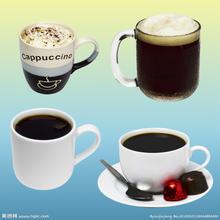Introduction to the characteristics of high-quality coffee beans with smooth texture in Bolivian coffee producing areas
The legal capital, the seat of the Supreme Court, with a population of 284000, 2790 meters above sea level. Founded in 1538, the city was formerly known as Chuquisaka. In 1809, the first uprising against Spanish rule broke out in South America. Bolivia declared its independence here in 1825 and became the capital in 1826. In 1839, it was renamed Sucre in honor of the second president of Bolivia, General Antonio Jos é Sucre. In 1898, the central government, presidential palace and parliamentary hall were moved to Russ, and the Supreme Court stayed in Sucre. Sucre has been listed on the UNESCO list of cultural heritage of mankind. Most of the east and northeast are Amazon alluvial plains, accounting for about 60% of the country's area; the central part is a valley area, belonging to the eastern foothills of the Andes, with developed agriculture, and many important cities are concentrated here; the west is the Bolivian plateau, with an average elevation of more than 1000 meters. Bolivia is a Plurinational country with mainly indigenous peoples, including ethnic Indians; the Mestizo: European and African immigrants and indigenous peoples.
Bolivians in the market
Bolivians in the market
Mixed-race offspring (about 30% of the Bolivian population) and European and African immigrants (about 15% of the total population). According to statistics, there are 37 indigenous communities in Bolivia, of which Quechua and Ayimala have the largest population, 1.558 million and 1.279 million respectively, and Guaran 78000
Lake Titicaca, located on the Coaya Plateau on the border between Bolivia and Peru, is the highest and largest freshwater lake in South America, one of the highest large freshwater lakes in the world, the highest navigable lake in the world, and the third largest lake in South America (after Lake Maracaibo and Patus lagoon).
Lake Titicaca Copacabana
Country: Bolivia
Altitude: 3812m
Producing area: Lake Titicaca
Baking degree: medium baking
Treatment: washing
Variety: iron pickup
Producer: tapping Baigabana small farmers
Flavor: dried aromas of roasted nuts and almonds, orange and pomelo
[hand punching reference]
Wash Bolivia by hand with a cup of water, it is recommended to wash Bolivia with 15g powder at 87 degrees water temperature, water powder ratio at 1:15, moderate grinding (small Fuji ghost tooth knife 3.54grind), V60 filter cup, the first injection of 30g water for 25s, injection to 110g water cut off, wait for the powder bed water to half of the water and then water injection, slow water injection until 230g water, the tail section does not want, the extraction time is 2Jiang 00s.
Flavor: dry aromas of roasted nuts and almonds, with soft acidity of oranges and white pomelos on the palate, with sweet caramel on the whole, smooth texture of nut milk, cleanliness and balance. The herbal aroma of the aftertaste is also quite fascinating. in the past, Bolivian coffee trees used to act as hedges and flowers and trees around the garden. Real commercial production began in the early 1950s. The coffee industry in Brazil was seriously damaged by the great frost in 1975, while Bolivia (Bolivia) benefited from it and developed rapidly.
Coffee producing areas in Bolivia:
Bolivian coffee is grown at an altitude of 180,000,670 meters.
Features of Bolivian coffee:
Flavor: high quality mixed coffee
Suggested baking method: medium to deep barbecue
★: general
The market for Bolivian coffee:
The coffee grown in Bolivia, in which Arab washed coffee beans are exported to Germany and Sweden, is not the best today and has a bitter taste.

Important Notice :
前街咖啡 FrontStreet Coffee has moved to new addredd:
FrontStreet Coffee Address: 315,Donghua East Road,GuangZhou
Tel:020 38364473
- Prev

Introduction to the characteristics and taste of high-quality coffee beans in the producing area of jasmine-scented rose coffee
In 1931, he obscure exported Kenya from Geisha Mountain Mountain in southwestern Ethiopia to Tanzania and Costa Rica, then transplanted to Panama in the 1960s, and then went through nearly half a century before he became a blockbuster, defeating the victorious armies such as Bourbon, Kaddura, Kaduai, Tibica and so on, winning 2005 in one breath.
- Next

Introduction to the characteristics of Yega Shifeiwaka Coffee Flavor Coffee producing area
The beans are small, neat and round. Ethiopian sun beans are generally G3--G5, but the beans are G2, equal to the grade of washed beans. Although there are still a few defective beans, they are commendable compared to the sun beans of Harald and Sidamo. The 2015 sun Yega snow caffeine has appeared in the G1 grade, surpassing the G1 washing in terms of quality and sales. This bean is baked
Related
- Detailed explanation of Jadeite planting Land in Panamanian Jadeite Manor introduction to the grading system of Jadeite competitive bidding, Red bid, Green bid and Rose Summer
- Story of Coffee planting in Brenka region of Costa Rica Stonehenge Manor anaerobic heavy honey treatment of flavor mouth
- What's on the barrel of Blue Mountain Coffee beans?
- Can American coffee also pull flowers? How to use hot American style to pull out a good-looking pattern?
- Can you make a cold extract with coffee beans? What is the right proportion for cold-extracted coffee formula?
- Indonesian PWN Gold Mandrine Coffee Origin Features Flavor How to Chong? Mandolin coffee is American.
- A brief introduction to the flavor characteristics of Brazilian yellow bourbon coffee beans
- What is the effect of different water quality on the flavor of cold-extracted coffee? What kind of water is best for brewing coffee?
- Why do you think of Rose Summer whenever you mention Panamanian coffee?
- Introduction to the characteristics of authentic blue mountain coffee bean producing areas? What is the CIB Coffee Authority in Jamaica?

